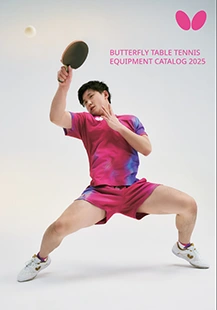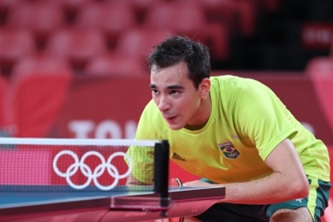(by Dr. Alan Chu, Ph.D., CMPC)
When Hugo Calderano stepped onto the court for the 2025 ITTF Men’s World Cup final, he wasn’t just facing world number one Lin Shidong—he was facing decades of near-misses, crushing defeats as recent as in the Paris Olympics, and the weight of being the perpetual underdog. What happened next changed table tennis history and offers powerful lessons for every player preparing for their big moments, whether it’s the upcoming US Nationals, a local tournament, or simply bouncing back from a tough loss.
Part I of this two-part mental training tip series focuses on pre-tournament preparation, and Part II will focus on post-tournament adjustments inspired by Calderano.
The Mindset That Changed Everything
Calderano’s transformation didn’t happen overnight. His key insight, “You always play better when you’re happier, lighter, and more relaxed,” wasn’t just positive thinking—it was a fundamental shift in how he approached competition. Instead of carrying the burden of expectations and past disappointments, he found a way to rediscover joy in the process.
After his historic victory, Calderano credited his success to “hard work, mental resilience, and capitalizing at crucial moments.” Notice the order: hard work came first, but mental resilience was what allowed him to convert that preparation into results when it mattered most.
Cultivating Belief Before Big Tournaments
Preparing for a major tournament like US Nationals requires more than just physical preparation. Here’s how to build unshakeable belief:
1. Document Your Progress
Keep a “confidence journal” where you record breakthrough moments, successful shots, and tactical insights from each practice session. Before big tournaments, review these entries to remind yourself of how far you’ve come and what you’re capable of achieving.
2. Visualize Specific Scenarios
Don’t just visualize winning—visualize overcoming adversity. Picture yourself down 2-0 in games and fighting back, just like Calderano did. Mental rehearsal of challenging scenarios builds the neural pathways you’ll need when pressure moments arrive. Need more guidance on visualization? Read my past post on Visualize like an Olympian for Your Table Tennis Glory.
3. Embrace Your Unique Style
Calderano didn’t try to become Chinese in his playing style—he maximized his own strengths while adapting tactically. Identify what makes your game special and lean into those advantages. Going along with #2, make tactical and mental plans on how you will deal with players of different styles (e.g., choppers, left-handed players, face-paced players) using your strengths.
4. Find Your “Reset” Ritual
Between losing the first game 6-11 in the World Cup final and mounting his historic comeback to win four straight games (11-7, 11-9, 11-4, 11-5), something clearly shifted for Calderano. Develop your own reset ritual based on what works for you—whether it’s controlled breathing (like box breathing), repeating a focusing phrase (“next point”), toweling off in a specific pattern, or taking a moment to visualize your next successful shot. The key is consistency, so it becomes automatic under pressure to help you return to your optimal state after tough points. See my previous posts on Use Pre-Point Routines – Mastering Crunch Time Like Timo Boll and US Nationals Reflection – Winning the Mental Game for additional ideas.
Practical Preparation Strategies
To sum it up, try and incorporate these Calderano-inspired approaches as you prepare for your next important tournament:
• Pressure Practice: Simulate tournament conditions in practice by creating artificial pressure—playing games where losing means doing fitness drills, or practicing with spectators watching.
• Tactical Flexibility: Work on having multiple game plans ready. Calderano’s ability to adapt mid-match was crucial to his comeback victory.
• Mental Training Sessions: Dedicate 15-20 minutes per day to visualization and mental rehearsal, especially scenarios where you’re behind and need to mount a comeback.
• Reset and Recovery Routines: Develop consistent pre-match, in-match, and post-match routines that help you access your optimal physical and mental states regardless of external circumstances.
























